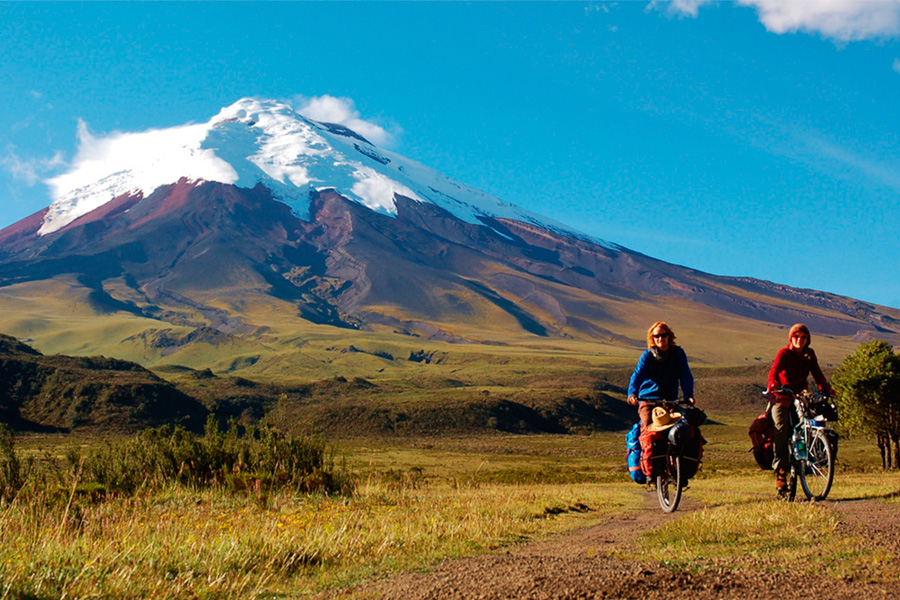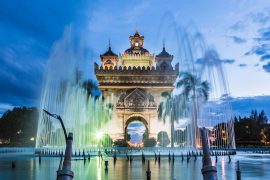The Cotopaxi National park is a large forest in Ecuador that extends to parts of Cotopaxi, Pichincha and Napo provinces best known for its active, snow-capped Cotopaxi volcano and Limpiopungo Lake. Asides the existence of these natural landmarks, the park is home to a wide variety of wildlife like the hawks, condors, and weasels.
Towards the east of the park, mudflows and stones from past eruptions can be found around the dot Valle Encantado (Enchanted Valley) with a multitude of trails weaving through the pine tree forest which pass through the nearby El Boliche National Recreational area.
At a short distance from the park is Quito which could serve as a perfect day trip, although the stunning early morning and late afternoon views of the volcano can take your breath away, a night out at the park would be advised.
The best time of year to get clear views of the Cotopaxi Volcano is usually around mid-July and would last until early October during the dry, windy season. Although, for the full fun experience of the Cotopaxi, the best time to visit always falls during the rainy season around the months of March-April.
Relax by the Laguna Limpiopungo
For those who are interested in just sitting back to relax, the Laguna Limpiopungo is a seasonal lake that increases in its size especially during the rainy season and is home to the Andean Gulls which can be seen year-round.
Observing the Hummingbirds, tiny bunny rabbits and a wide variety of seed-eating birds can be a very relaxing pastime while you take time off at the lake.
With a walk around the lake, you could get an incredible view of the Cotopaxi as long as the clouds are not out. Although, there is a great chance you would definitely have clouds and rains during the afternoon. The unpredictable weather changes of the Cotopaxi would make the experience entirely exhilarating when you eventually get to see it.
For people who cannot handle changes in altitude or hike to the shelters, camping or relaxing by the lake Limpiopungo is a great place to also stay and enjoy yourself.
Reaching the Cotopaxi Summit
Climbing to the top of the Cotopaxi is not very difficult, but you would need a bit of training and have been acclimatized before making the trip.
At a height of 5897 meters which is roughly around 19,347 feet above sea level, most times only half of the climbers actually make it to the summit.
What to bring on your trip
Considering the terrain of the Cotopaxi and how unpredictable the weather can be, there are a few key essentials you must have in order to enjoy your stay and have a perfect day. Here are a few quick suggestions for you;
- The right kind of clothing should be worn at all times which includes a warm hat, gloves, and scarf. Of course, you should also have a jacket to help keep you warm during the drastic temperature drop of the Cotopaxi.
- Hiking boots are best suited for you if you plan to climb the Cotopaxi. You might find it easy going up with regular shoes, but the difficulty then comes in when you have to descend. You would need enough traction on your boots to get you down.
- Lots and lots of water. Going up towards that altitude can find you going up against the equatorial sun which takes up most of the moisture in your body, therefore it is important to keep hydrated and have a tube of sunscreen handy for your skin.
- Snacks rich in calories will be of much benefit to you as you make the climb. Try to have a good stock of dried fruits, and oil-rich nuts and maybe a little chocolate as a remedy if you have altitude sickness.
- A basic first aid kit should always be readily available. If you are going as a group, you might want to go up with at least two kits containing the most appropriate headache medication for you. Note that once you start having headaches, it’s the first sign of altitude sickness.





Comments are closed.